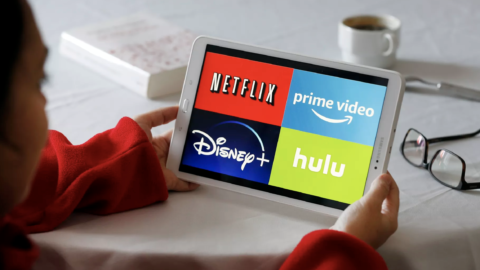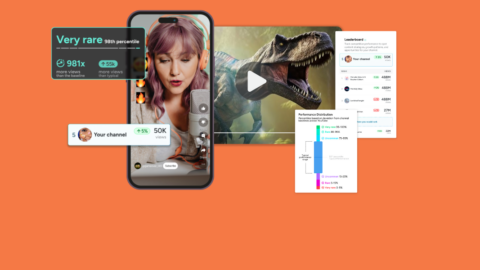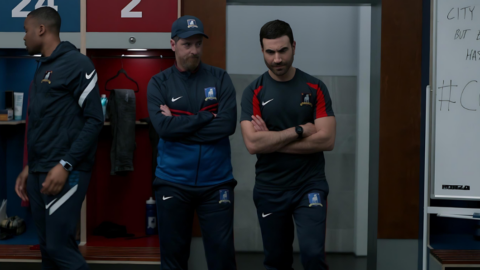Product Placement Integrates Brands Into Entertainment's Most Iconic Moments
Audiences cheered when Anne Hathaway’s character in The Devil Wears Prada confidently told her high-and-mighty colleague that she was, in fact, wearing the Chanel boots. Viewers laughed at the tongue-in-cheek scene in Wayne’s World, where the main characters sampled various food and beverages while humorously proclaiming they’d never “sell out.”
Product Placement Captures Viewer Attention In Ways Traditional Advertising Cannot
Brands are taking note. As marketers reduce spending on traditional advertising, product placement spending continues to surge, hitting $23 billion in 2021. By 2024, 70% of brands are projected to allocate at least 10% of their media budget to product placement in entertainment content.
With 78% of consumers buying products from brands they recognize, marketers view product placement as a golden opportunity to engage their target audience. The question isn’t why product placement—it’s which type of product placement?
This article explores four different approaches to product placement, and how to decide which will help meet your brand’s campaign KPIs:
1). Story-Driven Placement
2). Prop Placement
3). Branded Content
4). Virtual Placement
1. Story-Driven Placement
Authentic Narratives that Boost Your Brand
Also known as narrative placements, story-driven placements focus on authenticity. They often appear as verbal product mentions or branded moments that move the story or character development forward.
Story-driven placements are powerful, often shaping the narrative or even defining a character. Consider Daisy’s Red Ryder BB Gun in A Christmas Story or White Castle in Harold & Kumar Go to White Castle. In both films, the products are central to the plot and drive the characters’ actions. In some cases, products become characters themselves, such as “Wilson” the volleyball in Cast Away.
Story-driven placements integrate your brand into the content, helping bring the creative vision to life while enhancing the audience’s viewing experience.
Achieving Campaign Goals with Story-Driven Placements
Story-driven placements can deliver significant rewards for your brand, but they do require substantial time and money. These placements typically involve an upfront investment and have a development period of 4 to 15 months before you start seeing results.
The good news? Any brand can leverage story-driven placements to achieve campaign goals through their numerous benefits:
- Authenticity: Story-driven placements immerse viewers in the story without feeling intrusive. Successful integrations align the brand’s goals with the production’s creative vision.
- Stand Out: Unlike traditional ads, story-driven placements embed your brand into current cultural narratives, making it part of the conversation.
- High Exposure: Story-driven placements ensure on-screen prominence, featuring your products in buzzy content such as a hit comedy series or a major drama film, helping audiences become more familiar with your brand.
- Measurable Success: These placements have both scale and longevity. Audiences rewatch their favorite movies and binge their favorite shows, giving your brand repeat exposure.
Success Story: Eggo Sales Jumped 14% Thanks to Stranger Things
The character Eleven from Netflix’s Stranger Things didn’t just like Eggo waffles- she was obsessed.
Eggos became a recurring element in the series, sparking conversation among viewers. After the release of season two, Eggo saw a 14% increase in sales and received the highest number of social media mentions in the brand’s history. The trend continued, with sales increasing by another 9.4% in the first quarter of 2018.
Eggo originally made a splash in 1970 with the famous tagline “L’Eggo my Eggo,” and while it remains the bestselling frozen waffle in North America, it faced competition from other brands in the breakfast-to-go space. Stranger Things brought Eggo back into the spotlight, making it culturally relevant once again. Kellogg’s CEO, Steven Cahillane, credited the show with prompting consumers to reconsider Eggo when making purchases.
2. PROP Placement
A Safe Way to Extend Advertising Dollars
Prop placement is exactly what it sounds like—products are used as props in content. While the concept is simple, its rewards can be substantial for brands. Take Top Gun (1986), for example. As the highest-grossing film of that year, it famously boosted Ray-Ban’s sales by nearly 40%, thanks to Maverick’s iconic aviator sunglasses.
With prop placement, your brand benefits from skilled prop masters who handle your product throughout filming, making this a brand-safe strategy to reach your target audience. You can rest assured knowing professionals familiar with your product will showcase it in a way that aligns with your brand guidelines.
Why the Small Details Matter: How Prop Placement Strengthens Content
Beyond brand safety, prop placement offers unique opportunities for brands to meet their campaign goals. Like story-driven placements, prop integrations may take months to deliver measurable results. Brands considering this strategy should have a long-term perspective, allowing time for the integration to pay off.
With prop placement, brands can:
- Maximize their advertising budget: Compared to other ad strategies, prop placement is often cost-effective. You’ll save valuable marketing dollars while still generating measurable results that boost your bottom line.
- Capture a large audience: Prop placement allows your brand to gain significant exposure. Whether it’s in top-rated TV shows or critically acclaimed films, products can naturally appear in scenes that enhance the storyline and keep viewers engaged.
- See measurable ROI: With prop placement, you get hard data to justify your ad spend, from recall rates to sales increases and more.
Success Story: How General Mills Captured the Attention of a Tough Audience- Teens
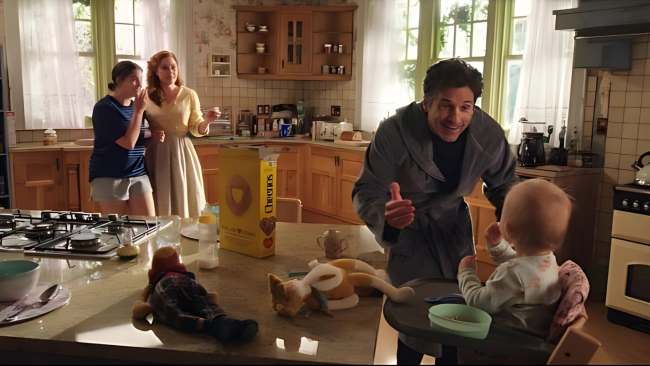
In today’s fast-paced world, you have about eight seconds to capture someone’s attention, and that window shrinks even more with teenagers.
Where some brands see a roadblock, General Mills saw an opportunity. They used prop placement to get in front of hard-to-reach teen consumers by placing their Cheerios cereal in popular shows on Netflix, Disney+, and Amazon Prime. Through the integrations, viewers saw their favorite characters enjoying the tasty cereal while sitting down with their family for breakfast, laying on the couch, or even on top of an omelet.
By placing Cheerios in buzz-worthy content, General Mills was able to connect with teens and saw impressive results:
- 57% of consumers reported a more positive opinion of Cheerios after the integration
- 29% lift in sales between exposed and unexposed audiences
- 44% unaided brand recall
- Sold 80,000 more cases of Cheerios
- 4% increase in purchase intent
- 6% increase in brand momentum
3. Branded Content
Matching Audiences and Targets for Powerful Results
Get the best of both worlds with branded content. This type of integration allows your brand to reach target audiences while maintaining greater control over the messaging, which also checks the brand safety box.
You can find branded content in a variety of formats, from daytime and late-night entertainment to unscripted television. Whether it’s early risers catching the news on The View, afternoon viewers following the latest drama on Dr. Phil, night owls unwinding with The Tonight Show Starring Jimmy Fallon, or hopeless romantics glued to The Bachelor, branded content provides a seamless way to engage diverse audiences.
The Proof Is in the Numbers: Branded Content Appeals to 70% of Consumers
Every year, more marketers allocate advertising dollars to branded content, and this trend is expected to continue. Experts predict branded content spending will reach $402 billion by 2025, a significant increase from $85.93 billion in 2020.
This surge in spending is no surprise—branded content delivers results, and the numbers speak for themselves:
- 22x: Branded content is 22 times more engaging than display ads.
- 70%: The majority of consumers prefer to learn about products through content.
- 86%: Branded content generates 86% higher brand recall compared to pre-roll ads’ 65%.
Branded content can require a sizable investment, but it is highly effective for achieving short-term goals. If time is of the essence, branded content may be your best bet, particularly for time-sensitive campaigns like back-to-school promotions or holiday deals.
To make the most of branded content, ensure your brand’s messaging resonates with your target audience. Brands that create emotional connections are more likely to inspire loyalty, with 82% of consumers reporting they are more likely to stay loyal to brands that align with their values.
Success Story: Jimmy Kimmel Live! Drives Major Gains for Brands
Branded content works well across a wide range of products, as demonstrated by Jimmy Kimmel Live!‘s collaboration with Chime, an online banking app. The show’s engaging content and nightly reach of 1.8 million viewers, combined with a collaborative creative process, led to impressive results for Chime.
Kimmel introduced a 60-second branded segment, in addition to Chime receiving four additional bumpers and a segmented post on the show’s YouTube channel for 30 days.
The results for Chime were significant:
- Unaided brand recall: 88%
- Brand consideration: Increased by 7%
- Brand rating: Increased by 14%
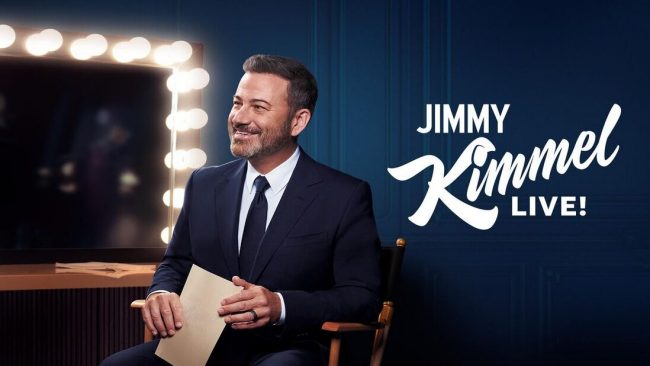
4. VIRTUAL PLACEMENT
The Future of Product Placement
As technology advances, so does the world of product placement. Virtual placements allow brands to be seamlessly inserted into content post-production, whether through digitally rendered products, billboards, or logos.
Virtual placements offer unparalleled flexibility. They can be integrated into various content types, from movies and TV shows to video games and more. Since products are added after filming, brands don’t need to worry about coordinating shipments to a set or negotiating with production partners months in advance. Productions also have the freedom to add or remove brand elements as needed.
However, while virtual placements open up new possibilities, they come with limitations. These placements are typically limited to certain types of content, lack character interaction, and often receive less screen prominence. Unlike story-driven placements, which remain in the content long after release, virtual placements may have an expiration date once a brand reaches its impression threshold.
Despite these drawbacks, virtual placements can be highly effective for brands looking to reach a specific audience with a high volume of impressions over a set period.
What Are the Targeting Capabilities of Virtual Placements?
The rise of streaming services and subscription video-on-demand platforms has fueled the growth of virtual placements. Media companies like Netflix, Peacock, Hulu, and Amazon have launched new offerings for virtual product placements, creating fresh revenue streams and demonstrating the immense value these integrations offer to marketers.
Take Hulu, for example. Compared to its standard 30-second commercials, product integrations on Hulu generated an 89% increase in purchase intent and a 47% boost in brand awareness.
Virtual placements have also helped companies like Nielsen better understand their audiences. Nielsen placed its product in popular shows like Bosch, Reacher, Goliath, and The Tomorrow War. By using its content ratings solution, Nielsen analyzed virtual placements in Amazon ads and found that, compared to the average TV audience, these integrations reached viewers who were:
- 45% more likely to earn $200,000 annually
- 25% more likely to have four or more years of college education
- 54% more likely to live in a household with two or more people
Success Story: CarMax’s Holiday Success with a Lifetime Virtual Placement
In 2022, each Lifetime holiday film attracted an average of 428,000 viewers, and CarMax capitalized on this by placing a virtual ad in the streaming platform for A Show-Stopping Christmas. This unique take on A Christmas Carol features ghosts of characters’ pasts, a budding romance, and even a Hollywood star to add some sparkle. The film resonated with audiences, and CarMax was able to stay top-of-mind with Lifetime’s holiday viewers.
By leveraging virtual placement during the high-traffic holiday season, CarMax ensured its brand remained visible to its target audience in a relevant and memorable way.

Going Further With a Trusted Partner to Build a Product Placement Strategy
Whether you’re just beginning your product placement journey or looking to elevate an existing program, the right strategies can yield significant rewards for your brand. With countless content opportunities and diverse approaches to product placement, partnering with an agency can help you determine how specific integrations can align with your campaign’s KPIs.
An agency partner acts as an extension of your brand, using their expertise to identify the most effective product placement strategy. Leveraging their established relationships within the entertainment industry, they can connect your brand with content opportunities that educate your target audience and highlight what makes your brand unique.



